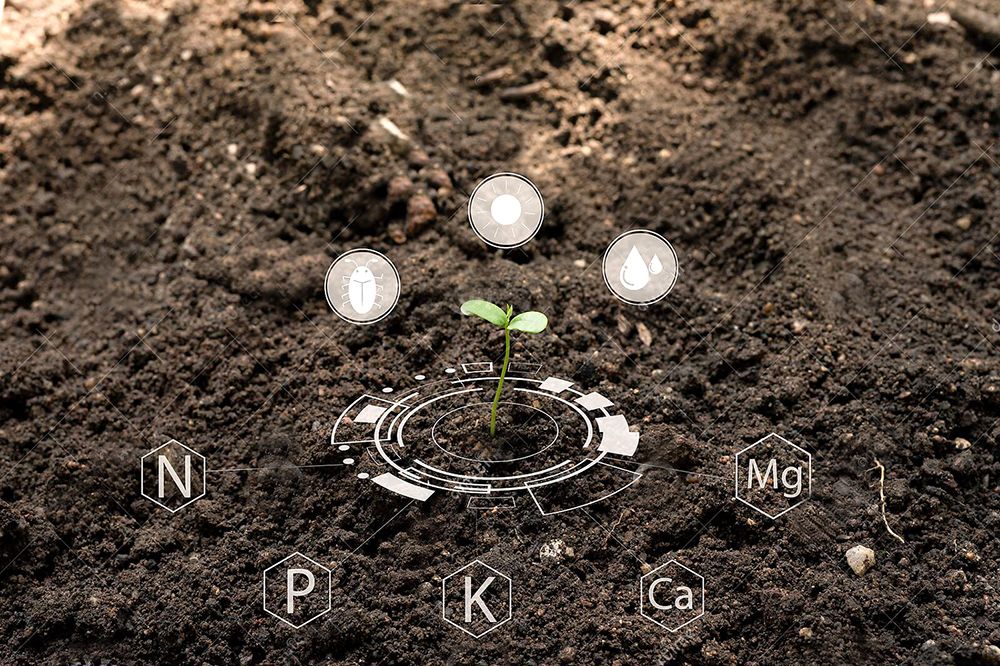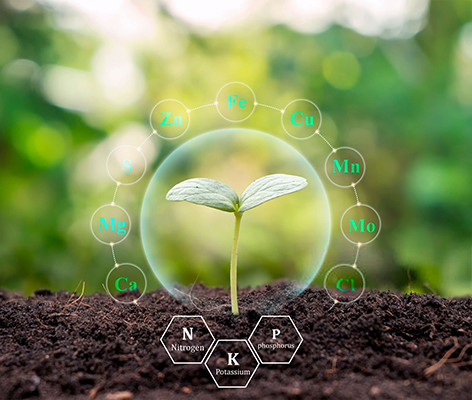Plant nutrition and growth
Plant nutrition and factors affecting plant growth
From the perspective of nutritional science, a combination of the chemical properties of an element, the movement of the element, and the characteristics of the plant determines the nutritional status of the plant.
By 1890, scientists had identified carbon, hydrogen, oxygen, nitrogen, phosphorus, sulfur, potassium, calcium, magnesium, and iron as essential nutrients for plant growth. In the following years, through more extensive research, the elements manganese, copper, zinc, molybdenum, boron, and chlorine were also recognized as necessary for plant nutrition. In 1983, scientists introduced nickel as an essential nutrient for plants. This element plays a role in nitrogen metabolism, especially when nitrogen is consumed form of urea.

Recent studies have shown that over 16 essential nutrients are necessary for normal plant growth and development. In hydroponic cultivation, a nutrient solution is now formulated with 20 elements.
These elements are classified as essential, secondary, or beneficial based on their roles in plants. Essential elements are crucial; their absence results in stunted growth or incomplete growth cycles. Each essential element has a specific function that cannot be substituted by others, directly influencing plant growth and metabolism.
In addition to the essential elements in plants, some elements are recognized as beneficial elements. Beneficial elements are those whose absence leads to reduced growth in plants but does not result in the death of the plant. Among these elements are silica, sodium, cobalt, and molybdenum.
For example, silica improves the growth and appearance of plants and increases their resistance to environmental stresses as well as pests and diseases. In the absence of this element, the plant becomes sensitive to biotic and abiotic stresses. In agricultural plants such as rice, a deficiency of silica increases the likelihood of phenomena like lodging or falling over.
Another useful element is cobalt. This element is required in plants that fix nitrogen, and in its absence, nitrogen-fixing bacteria become inactive, resulting in a nitrogen deficiency.
Plants need a specific concentration of each element to have optimal growth conditions; a deficiency or excess of any element in the plant can have a direct or indirect negative impact on plant growth and development. For example, an increased concentration of elements such as boron, manganese, copper, zinc, and chlorine is toxic to plants. This issue becomes important when farmers engage in mixed cropping of two plants in the field. For instance, the simultaneous cultivation of corn and peanuts and the need for boron in these plants can be mentioned.
In this regard, peanuts require a high amount of boron, whereas an increase in boron in corn plants leads to reduced growth and negatively affects plant performance.
An increase in the concentration of zinc (Zn) in plants indirectly disrupts iron absorption and causes symptoms of iron deficiency in the plant.

Mechanism of absorption of elements by plants
The mechanism of nutrient absorption in plants varies.
In plants like algae, all cells absorb soluble substances, while in aquatic plants, absorption occurs through the roots with the help of root hairs. Parasitic plants obtain nutrients from the host plant’s cells through their suckers. Soluble compounds pass through the leaves or other aerial organs and reach the plant. Rainwater, which always contains a certain amount of soluble substances, can penetrate through the cuticle layer and be absorbed by the plants.
Sometimes, especially in cases of incompatibility between elements or when the conditions for nutrient absorption through roots in the soil are not met, foliar feeding yields beneficial results.
Environmental factors like temperature, humidity, soil, and day length substantially influence plant uptake
Temperature:
Higher temperatures increase evaporation and transpiration, facilitating nutrient uptake. Root activity, which is connected to soil temperature, decreases in winter but does not stop completely. Moreover, high ambient temperatures during foliar spraying can cause nutrient evaporation and reduce absorption.
Humidity:
Soil moisture influences material movement and nutrient uptake; inadequate water restricts nutrient absorption, whereas excessive water can make nutrients unavailable to plants.
Light:
Nutrient uptake is greater during the day than at night because light increases physicochemical activities and chlorophyll production in trees, promoting nutrient absorption.
Soil:
Soil conditions and characteristics—such as element concentration, pH, clay type and amount, moisture, texture, organic matter, and physical factors like slope and elevation greatly influence nutrient absorption.
Element interaction
High levels of one nutrient can affect the absorption of others. One element may boost another’s absorption (synergy), whereas excessive amounts of one can inhibit or reduce the absorption of another (antagonism).
Optimizing fertilizer use through expert consultation and a customized application program is essential for enhancing crop yield and maintaining optimal nutritional conditions. Balanced fertilizer application depends on the health and quality of crops and greenhouses.

